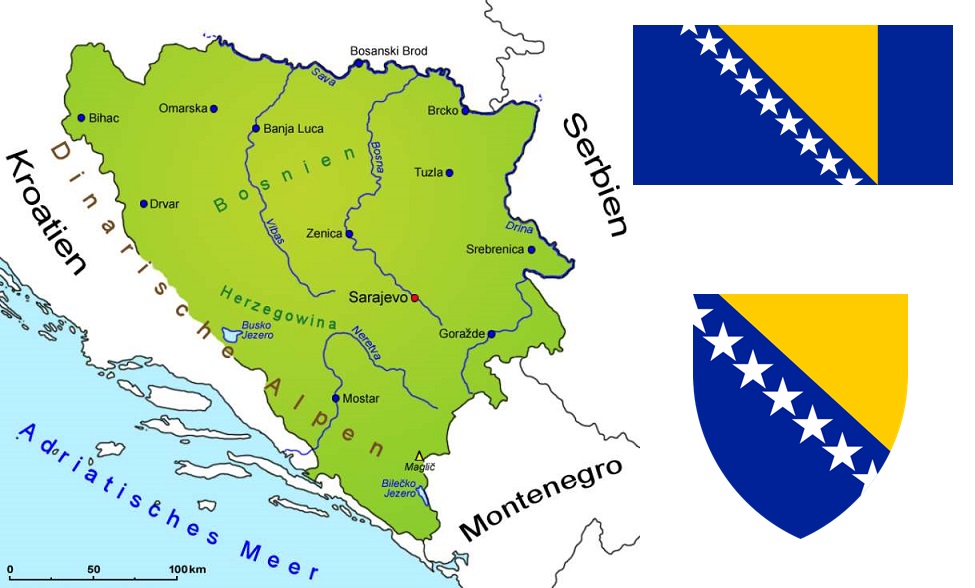Results
2,284 Results
Loading more Results ...
Loading more Results ...
Wine regions in Bosnia and Herzegovina 2 growing regions
Description to Bosnia and Herzegovina
The Republic of Bosnia-Herzegovina in south-east Europe with the capital Sarajevo covers 51,197 km². Geographically, it consists of the region of Bosnia in the north (80% of the national territory) and the smaller region of Herzegovina in the south. The country borders Croatia to the north and west, Serbia to the east and Montenegro to the south-east. The state also has a coastal strip of around 25 kilometres along the Adriatic Sea near Neum in the Neum Corridor. Bosnia-Herzegovina became independent in 1992 as a result of the war and the disintegration of Yugoslavia.

History
Organised viticulture began under the rule of the Habsburg monarchy of Austria-Hungary towards the end of the 19th century. In 1886, the wine and fruit-growing office was founded in Gnojnice. The wines were very popular at the Viennese court, which is why these vineyards are still called "imperial vineyards" today.
Viticulture today
The climate is temperate continental with hot summers and dry, cold winters. The best-known wine-growing region is Mostar (Old Bridge), which used to be the Islamic wine centre of Herzegovina. However, it was almost completely destroyed during the civil war in the 1990s. The vineyards are located on the coast and north of Dubrovnik in Croatia, mainly around the towns of Citluk, Caoljina, Stolac and Mostar. The dominant grape varieties are the autochthonous Žilavka (white) and Blatina (red). Other varieties are Cabernet Sauvignon, Krkošija, Plavac Mali and Syrah. In 2022, the vineyards covered 3,387 hectares of vines and the wine production volume was 32,000 hectolitres.
The brand wine "Kameno Vino" comes from an artificially irrigated vineyard in the desert-like Neretwa Valley. Samotok" is a light red wine made from the free-run must without pressing. The classification of the wines is based on sensory evaluations with a 20-point system and analytical tests. In the three-tier system, wines with a geographical origin must achieve at least 14 points, quality wines at least 16 points and top quality wines at least 18 points. Important producers are Hercegovina Vino, Podrum Andrija, Stolac, Vinarija Ljubuski and Vinarija Zadro.
Map: © Goruma
Flag: Public domain, Link
Coat of arms: Public domain, Link
Source 1st paragraph: WIKIPEDIA Bosnia-Herzegovina
Recent wines 28
 Vinogradi Nuić d.o.o.
— Herzegovina
2015 polsuho Let's go
83 WP
good
Vinogradi Nuić d.o.o.
— Herzegovina
2015 polsuho Let's go
83 WP
good

 Vinogradi Nuić d.o.o.
— Herzegovina
2013 Syrah trocken Mostarsko vinogorje
83 WP
good
Vinogradi Nuić d.o.o.
— Herzegovina
2013 Syrah trocken Mostarsko vinogorje
83 WP
good

 Vinogradi Nuić d.o.o.
— Herzegovina
2012 Merlot trocken Mostarsko vinogorje
85 WP
very good
Vinogradi Nuić d.o.o.
— Herzegovina
2012 Merlot trocken Mostarsko vinogorje
85 WP
very good
